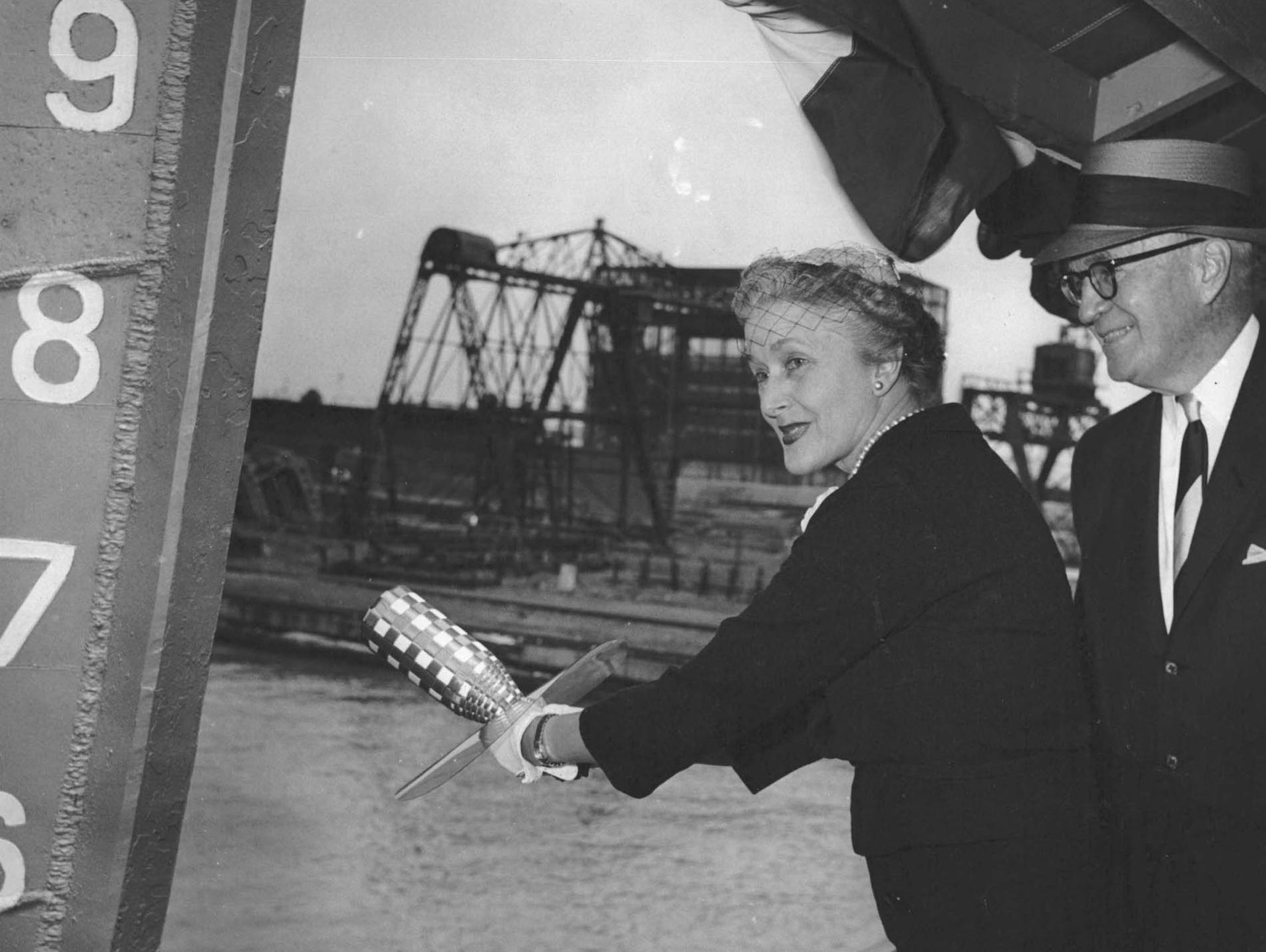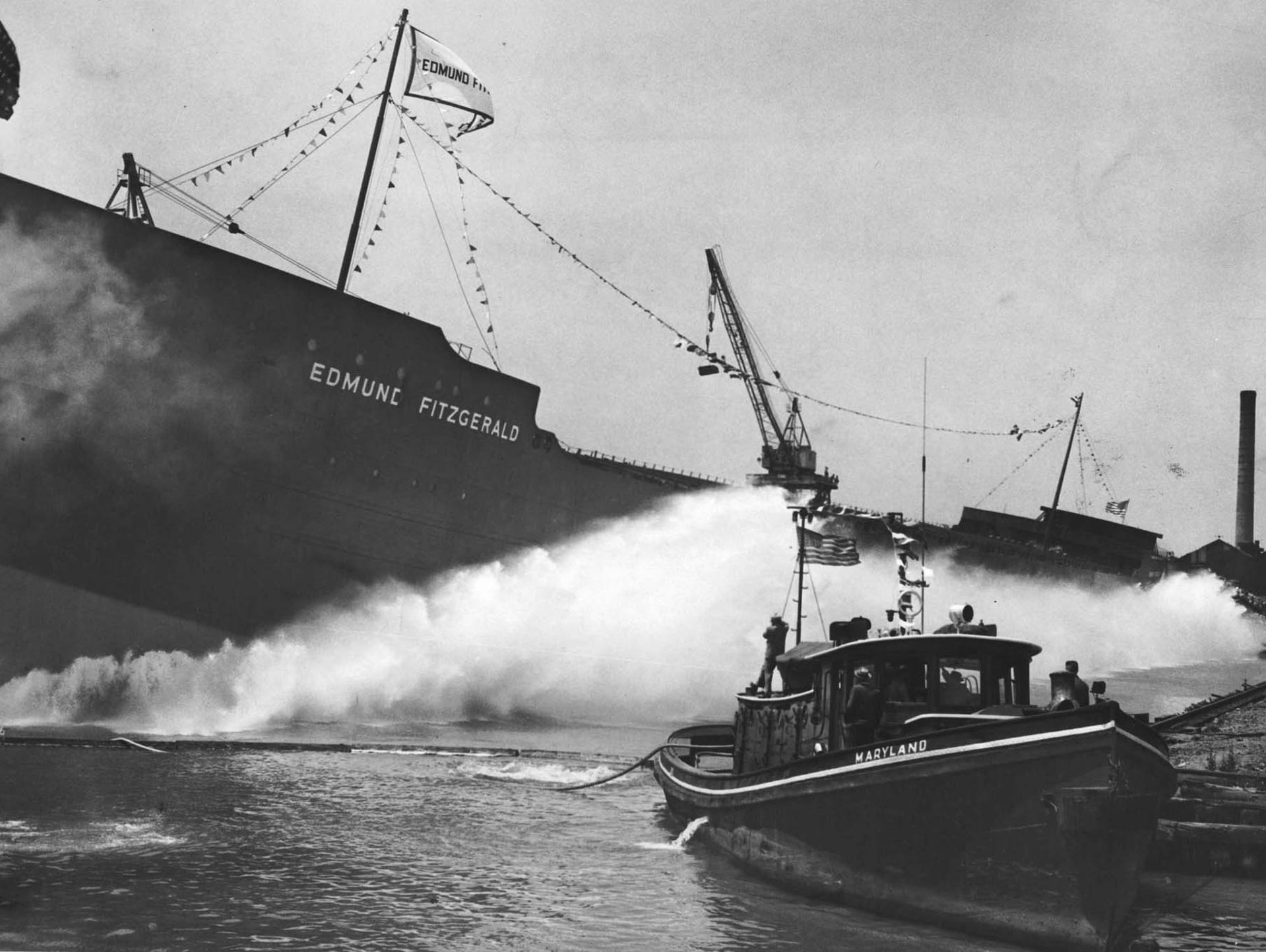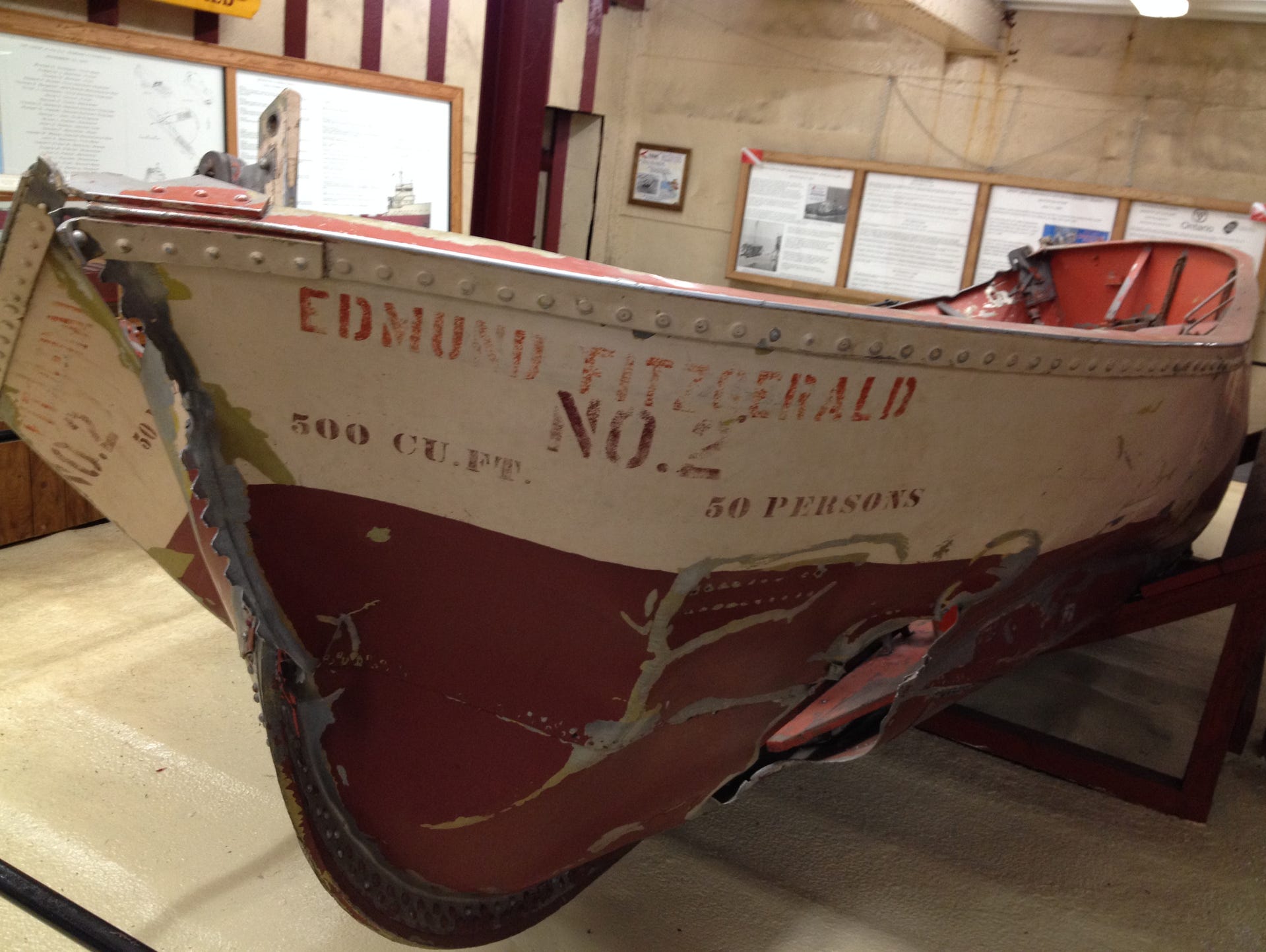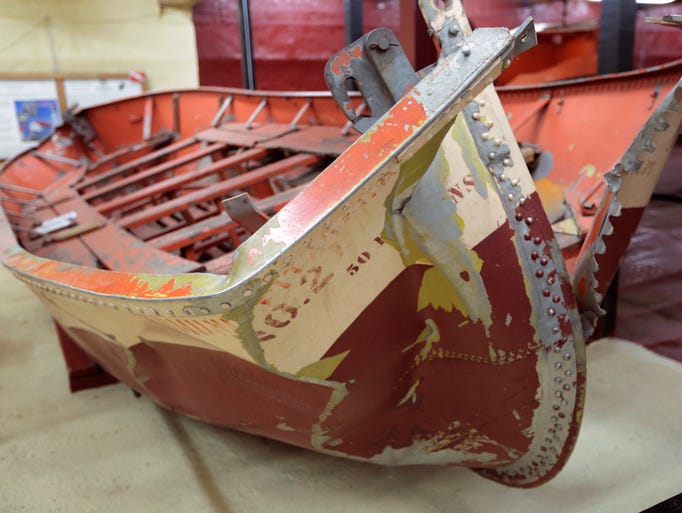STILL ON BREAK, BUT THE LEGEND
LIVES ON. . .
Much of that attention is owed to Gordon Lightfoot's haunting ballad, "The Wreck of the Edmund Fitzgerald," which memorialized the ship and its crew members, whose bodies remain with the sunken vessel.
"Lake Superior seldom coughs up her victims unless they're wearing life jackets. As of this time, we have no reason to believe the men of the Fitzgerald had time to get into life jackets," Capt. Charles A. Millradt, commander of the Soo Coast Guard Station, said at the time. Nothing so tragic has occurred on the Great Lakes since.
Forty years after the Fitzgerald sank to its chilly resting place, AP is making a version of the story available.
Rescuers searched Lake Superior's chilly waters Tuesday for the 29-member crew of the sunken ore-carrier Edmund Fitzgerald but found only an oil slick, empty lifeboats and life jackets.
Aircraft and ships crisscrossed the lake's eastern tip in the area where the ship, once the largest ore-carrier on Lake Superior, went down in 520 feet of water about 7:30 p.m. Monday.
Coast Guard officials said it was unlikely anyone could survive in the 51-degree water more than three hours but added that they were still hopeful.
The 729-foot vessel vanished from radar screens as winds of hurricane force — of 75 miles per hour — raised waves to 25 feet in 42-degree weather.
"In those conditions, survivability on the average would be about three hours," said a Coast Guard spokesman. "But this has been greatly exceeded on many occasions if they got into a protective life raft or were wearing protective clothing."
An oil slick, two lifeboats, a life raft and other debris were found in the area, with some washing up on the Canadian shore 13 miles to the northeast. One of the lifeboats had a serial number matching that of the ship, authorities said.
Among the debris were several orange life jackets, some bobbing in the water and others washed onto the rocky shoreline.
The lake surface was extremely calm Tuesday, and search operations were aided by a dull gray sky which eliminated reflections and made it easier to spot debris from the air.
Two freighters, a pair of Coast Guard helicopters and two planes were taking part in the search.
The Coast Guard said the Fitzgerald may have broken up and sunk before a distress call could be made. A nearby vessel, the Arthur M. Anderson, reported it received a call Monday night from the Fitzgerald. The call indicated the Fitzgerald was taking on water but its pumps were working and the vessel was not in immediate danger.
One Coast Guard spokesman said the Fitzgerald "probably broke in two." But Ens. Kenneth Baker added that a hatch cover could have blown off, causing the vessel to take on water.










No comments:
Post a Comment